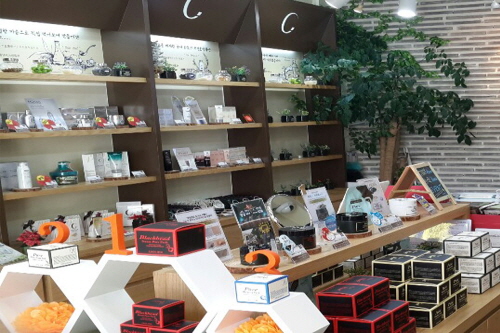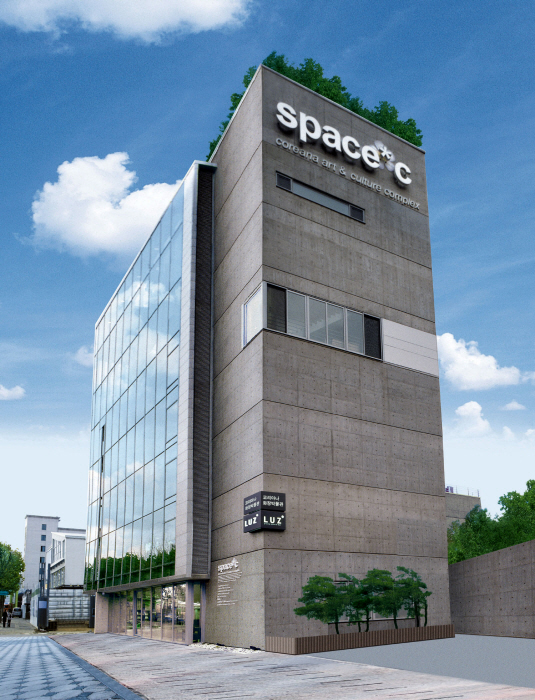Evita Clinic (에비타흉부외과의원)
5.4Km 2025-10-23
(5th Floor, Burda Moon Building), 815 Nonhyeon-ro, Gangnam-gu, Seoul
In 2009, Evita Clinic launched healthcare services combining cosmetic procedures and surgeries with traditional thoracic surgery.
With the number of English-speaking patients gradually increasing, all staff members have come to speak English as a common language. We are evolving into a multinational clinic committed to raising awareness of Korea's advanced medical technology across the world.
Our director is a board-certified cardiothoracic expert with extensive experience of treating heart, vascular, and pulmonary diseases, thoracic deformities, and other severe illnesses at a university hospital. Building on the experience, His private practice, established in 2008, combines more than a decade of experience in dexterously suturing micro vessels with cosmetic and reconstructive surgery, perfecting his skills even further.
CAOLION Cosmetics (카오리온)
5.4Km 2025-01-06
8, Apgujeong-ro 50-gil, Gangnam-gu, Seoul
+82-70-4632-4420
Established in 1995, CAOLION Cosmetics has been making hypoallergenic cosmetics for sensitive skin for 18 years.
The company launched natural cosmetics for the first time with a 3-free principle: pigment-free, fragrance-free, and alcohol free. At the present, the company has developed products that are exclude up to 17 adverse ingredients such as preservatives and mineral fibers.
CAOLION was the first Korean brand to enter into LVMH (Louis Vuitton Monët Hennessy)
Group's global cosmetics retail chain SEPHORA after being recognized as a quality natural cosmetic product for senstive skin after over two years of quality control. It is loyal customers as well.
CU - Mapo IVY Branch [Tax Refund Shop] (cu마포아이비점)
5.4Km 2024-06-27
1F, #B101, 136, Seogang-ro, Mapo-gu, Seoul,
-
Patagonia - Garosugil Branch [Tax Refund Shop] (파타고니아 가로수길직영점)
5.4Km 2024-06-27
17, Dosan-daero 15-gil, Gangnam-gu, Seoul
-
Olive Young - Hongje Station Branch [Tax Refund Shop] (올리브영 홍제역점)
5.4Km 2024-04-17
1F, and 2F, 446, Tongil-ro, Seodaemun-gu, Seoul
-
Stüssy Seoul - Apgujeong Branch [Tax Refund Shop] (스투시서울 압구정)
5.4Km 2024-04-23
B1F and 1F, 42, Apgujeong-ro 46-gil, Gangnam-gu, Seoul
-
Coreana Art & Culture Complex (코리아나 화장박물관)
5.4Km 2021-01-25
827, Eonju-ro, Gangnam-gu, Seoul
+82-2-547-9177
Coreana Art & Culture Complex is the largest museum in Korea founded exclusively for cosmetics and was created to preserve and promote beauty items and the make-up culture of Korea. The museum is centered around the many beauty items collected over 40 years by Dr. Yu Sang-ok, one of the executive directors of Coreana Cosmetics. In particular, Culture Space C, which opened in 2003 in Sinsa-dong, showcases cosmetics in a multitude of themes, and even sends exhibitions overseas to promote Korean cosmetics on a global stage.
Beauty & Young Clinic [Tax Refund Shop] (뷰티앤영의원)
5.4Km 2024-06-27
626, Gangnam-daero, Gangnam-gu, Seoul
-
Grace Onyoung Plastic Surgery [Tax Refund Shop] (그레이스 성형외과)
5.4Km 2024-04-23
4F, and 5F, 623, Gangnam-daero, Seocho-gu, Seoul
-

![Daiso - Sinchon Branch [Tax Refund Shop] (다이소 신촌)](http://tong.visitkorea.or.kr/cms/resource/50/2878350_image2_1.jpg)

![Patagonia - Garosugil Branch [Tax Refund Shop] (파타고니아 가로수길직영점)](http://tong.visitkorea.or.kr/cms/resource/88/3314488_image2_1.jpg)
![Olive Young - Hongje Station Branch [Tax Refund Shop] (올리브영 홍제역점)](http://tong.visitkorea.or.kr/cms/resource/16/2888016_image2_1.jpg)
![Stüssy Seoul - Apgujeong Branch [Tax Refund Shop] (스투시서울 압구정)](http://tong.visitkorea.or.kr/cms/resource/64/2879564_image2_1.jpg)

![Beauty & Young Clinic [Tax Refund Shop] (뷰티앤영의원)](http://tong.visitkorea.or.kr/cms/resource/37/3313637_image2_1.jpg)
![Grace Onyoung Plastic Surgery [Tax Refund Shop] (그레이스 성형외과)](http://tong.visitkorea.or.kr/cms/resource/04/2887904_image2_1.jpg)
 English
English
 한국어
한국어 日本語
日本語 中文(简体)
中文(简体) Deutsch
Deutsch Français
Français Español
Español Русский
Русский